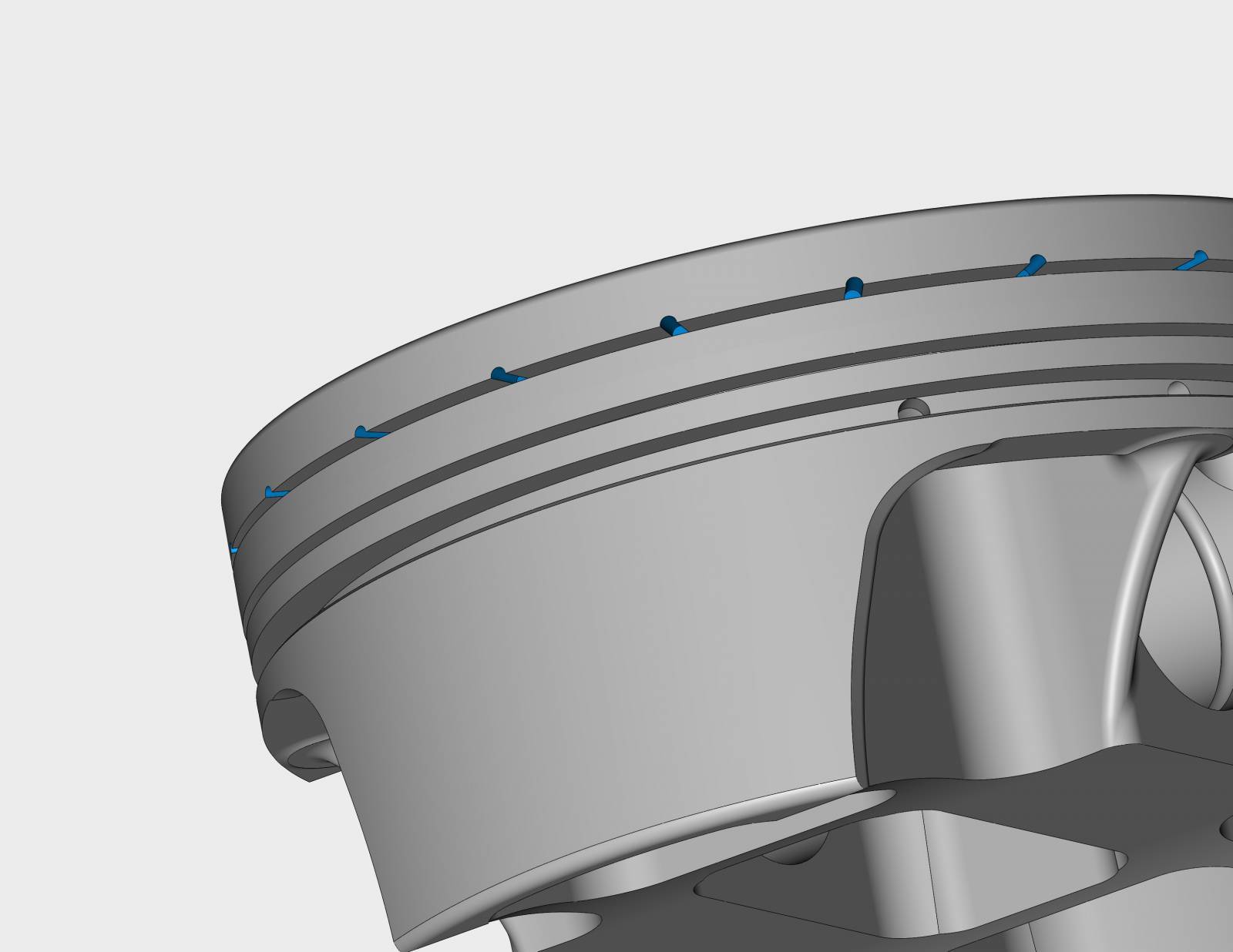Gas Porting Pistons Explained

Gas Porting Pistons Explained
Gas porting pistons is done to improve ring seal and enhance combustion efficiency, particularly in high-performance and racing engines. Here’s why:
1. Improved Ring Seal
Gas ports allow combustion pressure to reach behind the top piston ring, forcing it outward against the cylinder wall. This improves the seal, reducing blow-by and increasing power.
2. Better Heat Management
By promoting better ring contact, gas porting helps transfer heat from the piston into the cylinder wall and coolant system, reducing the risk of localized hotspots and detonation.
3. Increased Power and Efficiency
With better ring seal, the engine retains more cylinder pressure, leading to improved power output and fuel efficiency.
4. Reduced Oil Contamination
A better seal reduces the amount of unburned fuel and combustion gases reaching the crankcase, keeping the oil cleaner for longer.
Types of Gas Porting
- Lateral (Side) Gas Ports – Small holes are drilled into the piston’s top land, directing pressure to the ring from the side.
- Vertical Gas Ports – Holes are drilled straight down from the piston crown, delivering pressure directly to the back of the ring.
Which one is better?
- Vertical gas ports provide a stronger sealing effect but can clog with carbon deposits over time.
- Lateral gas ports are more resistant to clogging and often preferred in endurance applications.
When Should You Gas Port Pistons?
- When running high-compression or forced induction engines.
- If you're chasing every bit of power in a drag, circuit, or high-performance street build.
- When using low-tension rings to reduce friction while maintaining ring seal.
Gas porting is common in race engines, but it does increase ring wear, so it’s best suited for applications where frequent rebuilds aren’t an issue.
